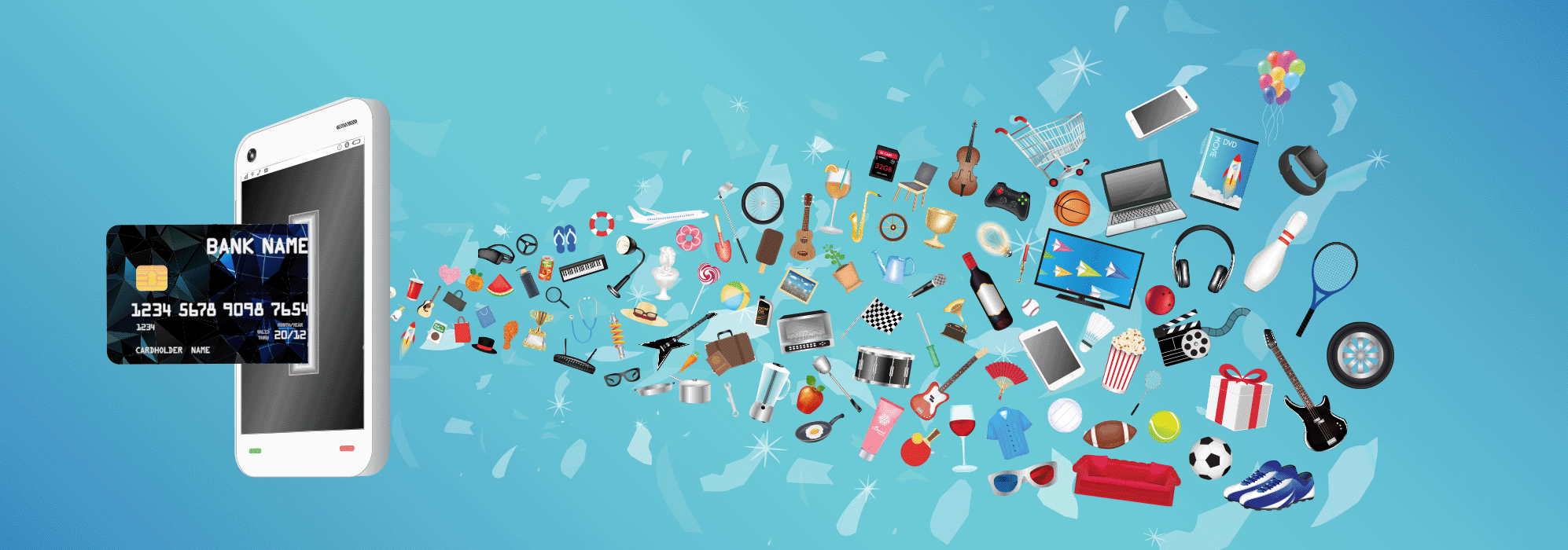Learn the basics of a Financial Media Network and how it operates like a Retail Media Network, leveraging the digital media assets and audiences of banks. Click here for details about Snipp's Financial Media Network.
The Rise of Digital Media Networks
Digital media networks help advertisers reach their desired audience by leveraging contextual and/or behavioral targeting solutions. Media networks are typically designed and built to serve a specific type of advertiser. Media networks are nothing new. In the earliest days of advertising, magazines and newspapers set the standard for media buyers who wanted to reach their specific target audiences.
These days, websites and mobile apps make up the foundation of digital media networks’ channels but recent changes in the use of first-party targeting data have sparked the launch of a new generation of media networks. Retail Media Networks (RMN) hit the scene with great fanfare a few years ago as a result of retailers exploring monetization of their first-party data.
In order to drive sales of specific products at their stores, retailers sell access to their digital audiences from their websites and mobile apps to consumer packaged goods (CPG) brands. Globally, GroupM estimates that Retail Media will be a US$110.7 billion industry by the end of 2022, up from US$88 billion in 2021. This represents 18% of all global digital advertising and 11% of all advertising. Using shopper history data, retailers target consumers most likely to purchase different categories of merchandise. Retailers are paid by CPG & FMCG companies to leverage this first-party data for efficient ad placements. Recent TradeDesk research states that 74% of brands have dedicated Retail Media Network budgets.
Media Networks and Banking
So, it’s no surprise that other industries with high volume consumer interaction are investigating similar models. In particular, banks are examining the value of their advertising assets, allowing third-party businesses to purchase advertising on their web sites and mobile apps. Across significant geographic footprints, banks have first-party shopping data from very large and engaged consumer audiences. Bank account holders check their mobile/web banking apps several times a week, and some do so daily. This channel represents a virtually untapped audience of more than 200 million (US) highly engaged shoppers who are expecting offers that help them spend efficiently.
Media channels with this level of engagement are very attractive to advertisers. The banks initially aimed to drive cardholder value by offering discounts (cash back) when the cardholder shopped. As part of these programs, the banks encouraged retailers to offer a percentage off the entire basket amount for purchases made using the bank's credit or debit card. When it was first rolled out, it was viewed as a loyalty play, and it worked "okay" but not great. As opposed to retail media networks, banks only see where consumers shop and not what they buy. The basket-centric approach was fundamentally flawed. Retailers make up only a small percentage of digital media budgets, and the lion's share of marketing dollars are controlled by manufacturers of products sold by retailers.
The most valuable offers for a consumer are those found in grocery stores, pharmacies, and convenience stores. As these retailers have particularly tight margins and rely heavily on brand-level funding, they avoid basket-level offers and focus their marketing on specific brands that utilize manufacturer marketing resources. To put it simply, bank programs, even though they have high value and unique assets, have been hobbled by lack of innovation.
The solution? By combining bank assets with SKU level data, the product manufacturers can fund cardholder discounts.
The Rise of the Financial Media Network
The new structure is called a Financial Media Network (FMN). It works like this – The cardholder’s bank offers cash back discounts on specific SKU level products. Buy X product and get Y cash back. Consumers use bank cards enrolled in FMNs to purchase products and receive cash back rewards directly deposited to their credit or debit cards. As they walk through the store, consumers add the promoted products to their shopping baskets. At the cash register, they pay with the FMN-enabled credit or debit card. The FMN platform automatically tracks the rest. Consumers enjoy a seamless experience.
A FMN platform is a complex and powerful beast. The application manages SKU level advertising campaigns, displays offers to consumers, ingests data from retailers and banks, cleans receipts to accurately identify the contents of consumers' baskets, validates qualified consumer offer redemptions, flags fraud and generates in-flight and post-campaign reporting for brands, retailers and banks. Furthermore, it has to be done anonymously without access to personal information (PII) or credit card information (PCI).
Although none of these challenges are trivial, cleaning receipt data is the most challenging for a FMN. Currently, there is no universal library of SKU level identifiers that spans all retailers. In other words, the 27oz Blueberry frosted Pop-tarts you purchase at one store will have a very different identifier on the receipt from those you purchase at another store. In fact, that identifier could be different even when the same item is bought from two separate locations of the same store chain. There may be 40,000 items in a typical grocery store, and as the seasons change and products evolve, products and their identifiers may change. FMNs must be accurate in order to be useful. Missing a qualified purchase can upset the consumer who is expecting their cash back and brands need to track their media and promotional budgets down to the specific product.
The Flywheel of the Financial Media Network
What are the benefits of all this effort? The flywheel of a Financial Media Network revolves when its constituents share the value:
- Cardholders receive cash back discounts while shopping. Everyone likes to save money. According to Savemycent.com research, 88% of people use coupons when shopping regardless of their income level.
- In addition to reaching a wide and well targeted audience, the product manufacturer drives sales and receives full funnel attribution reporting to prove ROI. The average American shopper shops for groceries 1.6 times per week. To stand out among the sea of competitors, brands need all the marketing help they can get.
- Every bank strives to make their cards the most visible in a wallet. The average consumer has four credit cards, with the highest value card being used the most. Cards are the preferred tender type for grocery. According to a new Bankrate.com study, 46 percent of shoppers swiped cards to pick up groceries in April. Meanwhile, 39 percent paid by debit card, while only 15 percent paid by cash.
Retailers, especially retailers who have deployed RMN’s will find great value in partnering with Financial Media Networks. Retailers have SKU-level data and CPG marketing budgets and banks offer a bespoke media channel that allows them to target based on purchase behavior. As a result, participating retailers would drive consumers to their stores to purchase their products.
As Financial Media Networks scale, they need time to prove their value and gain traction in the digital media market. During this growth stage the cost structure is 100% performance based. This means advertisers only pay when their goals are met.
To hear more about Financial Media Networks, listen to Tom speak on the Digital Commerce Alliance podcast episode on this topic (on the Commerce Code podcast site or here on YouTube).
About the Author
Tom Burgess has four decades of experience innovating in the fintech, data and digital media industries. As a serial entrepreneur he has been granted multiple patents for his pioneering work and for the past 10 years has been focused on loyalty and rewards in the payments industry. Learn more about Snipp Interactive’s Financial Media Network or contact us to learn more.






